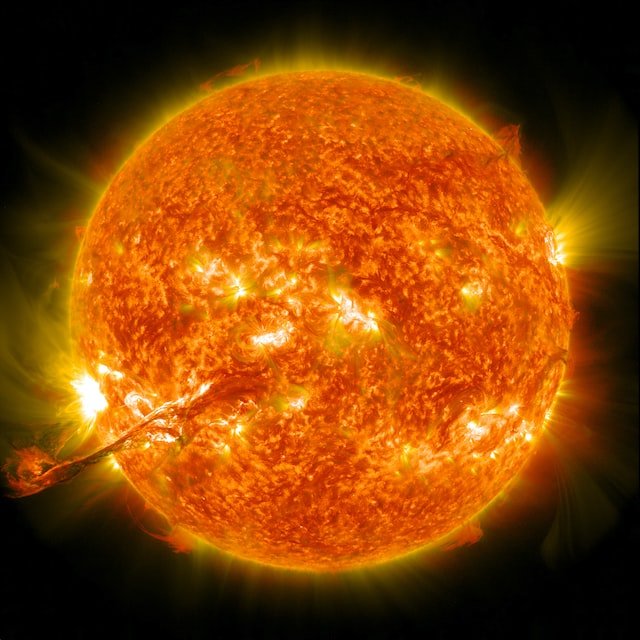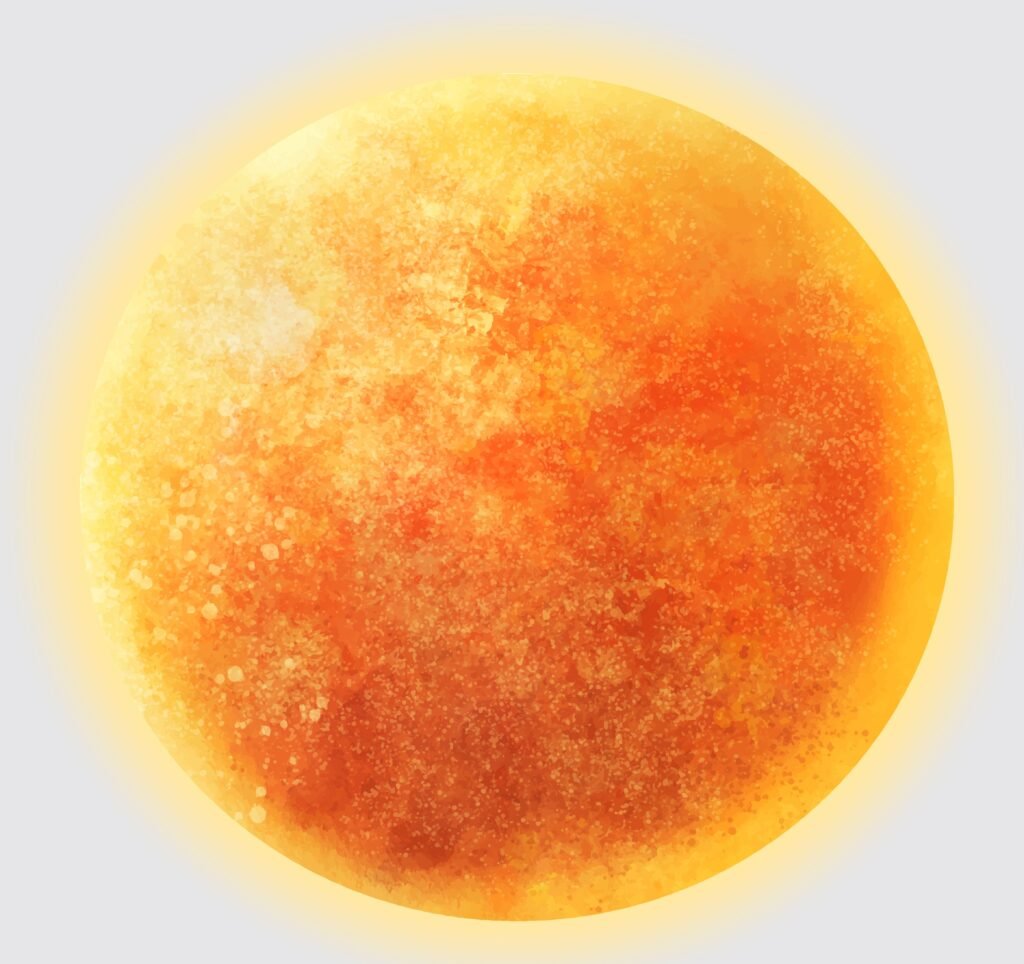In our solar system, the Sun is the largest planet. It consists of seven layers: 3 internal layers and 4 outer layers. The internal layers are the core, the radiative area, and the convection area, even as the outer layers are the photosphere, the chromosphere, the transition region, and the corona.

The Sun is a star in the center of the Solar System. It is a nearly ideal sphere of hot plasma, with an inner convective motion that generates a magnetic field through a dynamo process. Its diameter is about one point three nine million kilometers (864,000 miles) or 109 times that of Earth. Its mass is about 330,000 instances that of Earth.
It accounts for approximately 99.86% of the whole mass of the Solar System. The Sun presently fuses approximately six hundred million tons of hydrogen into helium every second, changing four million tons of matter into energy every second.
The layers of sun
The layers of the Sun are divided into 2 larger groups, the outer and the inner layers. The outer layers of the sun are the following Corona, the Transition Region, the Chromosphere, and the Photosphere, whereas the inner layers are the Core, the Radiative Zone, and the Convection Zone. The Corona is the outmost one and There are four outer layers of the Sun. It starts at regarding 1300 miles on top of the photosphere, and its temperature is measured to be around 900,000 degrees Fahrenheit.
The Convection zone is the outermost one and There are 3 inner layers of the Sun. It fully surrounds the next layer, the Radiative zone, after which we have the Core as the innermost layer of the Sun.
Just like our planet, and most different celestial bodies, the Sun is split into distinct layers. The essential distinction is that the Sun isn’t solid, in contrast to Earth, that the layers are a touch harder to verify. as a result the Sun is generally composed of He and atomic number 1 and is not solid, it doesn’t have an outer boundary that’s clearly defined.
However, we are able to determine the inner structure of the Sun, and it’s created of seven different layers. The layers of the Sun are divided into 2 larger groups, the outer and the inner layers. The outer layers are the Transition Region, the Chromosphere, Corona, and the Photosphere, whereas the inner layers are the Core, the Radiative Zone, and the Convection Zone.

The sun(The Outer Layers)
Transition region Chromosphere, Photosphere, Corona.
The Corona is the outmost one and There are four outer layers of the Sun. It starts at regarding 1300 miles on top of the photosphere, and its temperature is measured to be around 900,000 degrees Fahrenheit. it’s not possible to examine the Corona with the naked eye, however, there’s an exception. we are able to see it throughout a solar eclipse, or by using a special device referred to as the coronagraph. there’s no higher limit to the Corona.
It is followed by the Transition region, which is a remarkably slim layer that divides the layer from the Corona. Its breadth is only sixty miles, which is improbably tiny for a layer on a body as massive because of the Sun. This layer marks the spot wherever the temperatures rise tremendously since the Corona layer is way hotter than the layer.
The Chromosphere is the layer we discover between the distances of 250 and 1300 miles from the solar surface. The temperatures in this layer vary greatly, with the parts that are beyond the solar surface being much hotter than those that are nearer to it. Still, it doesn’t compare to the temperatures that are reached within the Corona layer. it’s a motivating factor to note however the temperature in these layers grows the additional away we have a tendency to move from the middle of the Sun.
The innermost layer of the outer layers of the Sun is the photosphere and is the last layer. we have a tendency to be able to observe this layer directly, and its temperatures vary between 11,000 and 6,700 degrees Fahrenheit. the bulk of this layer is roofed by granulation, which is caused by bubbling gases and sunspots from magnetic fields.
The Inner Layers of the sun

Radiative zone, Core, and Convection zone
the Convection zone is the outmost one and There are 3 inner layers of the Sun. It fully surrounds the future layer, the Radiative zone.
In this layer, all of the new material found close to the middle of the Sun rises cools down, and drops back to the radiative zone to induce a lot of heat. this can be the movement that makes sunspots and star flares. This layer marks the border of what we have a tendency to sometimes refer to as the Sun.
the second inner layer of the sun is the radiative zone. It sits outside of the core, and it holds its extraordinarily high temperature. The zone itself encompasses a temperature of around seven million degrees Fahrenheit. This layer is a passage for all the energy that’s released by the core. Photons travel through the radiative zone, and they can’t travel through long ranges of space, thus it takes nearly fifty million years for a photon to travel through this layer of the Sun.
Finally, we have the core, because of the innermost layer of the Sun. The core is plasma, however, its movement is extremely similar to that of a gas. The temperature of the core of the Sun is around twenty-seven million degrees Fahrenheit. within the core, nuclear reactions occur that make He from atomic number 1 atoms. This releases huge amounts of energy and starts moving outward toward the opposite layers. This energy eventually becomes the light and warmth we have a tendency to receive on Earth.
